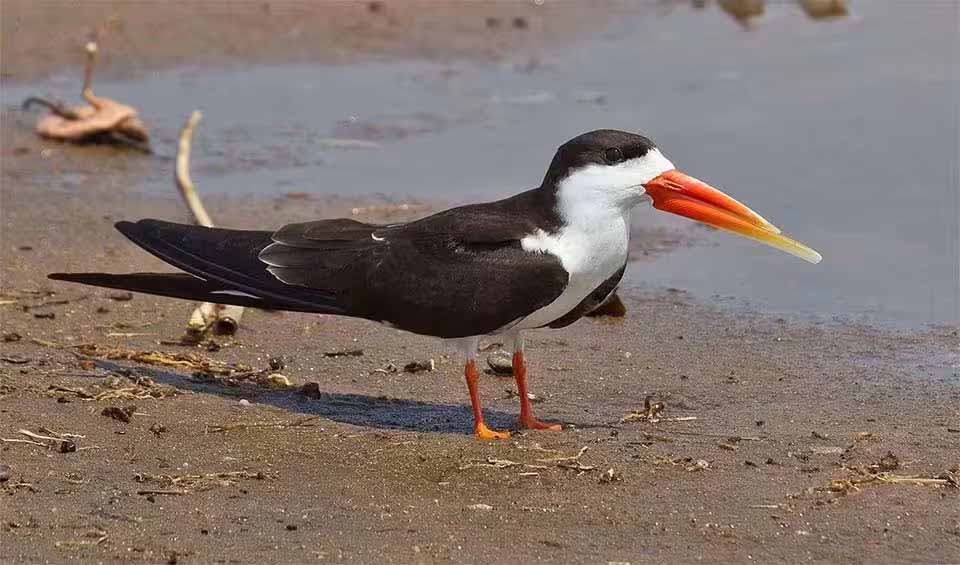With its distinctive bill adorned in brilliant orange-red at the base and capped with a sleek black tip, it is a striking sight along the waterways of sub-Saharan Africa. This unique bill adaptation, characterized by a flattened lower mandible that is approximately one-third longer than the upper, serves a specialized purpose in the skimmer’s feeding behavior. As the bird flies gracefully in lines over calm waters, it dips its lower mandible into the surface, skimming the water for prey. When a fish is detected, the skimmer swiftly snaps its mouth shut, capturing its meal with remarkable precision.
One of the most remarkable features of the African skimmer is its distinctive vertical pupil, a trait shared by only a handful of species in the animal kingdom. This unique eye structure allows the skimmer to regulate the amount of light entering its eye, enabling it to adapt to varying light conditions with remarkable efficiency. By narrowing the pupil to a single slit in bright sunlight or dilating it into a full circle in low-light conditions, the African skimmer maximizes its visual acuity and ensures optimal hunting success regardless of the time of day.
The African skimmer’s feeding behavior is most active during the crepuscular periods of dawn and dusk when light levels are lower, and its exceptional night vision further enhances its hunting capabilities during these times. This nocturnal prowess enables the skimmer to forage efficiently in low-light conditions, relying on its keen eyesight to detect and capture prey even in the dimmest of environments.
Distribution
 Angola
Angola Benin
Benin Botswana
Botswana Burkina Faso
Burkina Faso Burundi
Burundi Cameroon
Cameroon Central Af. Rep.
Central Af. Rep. Chad
Chad Congo-Brazzaville
Congo-Brazzaville Côte D’ivoire
Côte D’ivoire DR Congo (Kinshasa)
DR Congo (Kinshasa) Egypt
Egypt Equatorial Guinea
Equatorial Guinea Eritrea
Eritrea Ethiopia
Ethiopia Gabon
Gabon Gambia
Gambia Ghana
Ghana Guinea
Guinea Israel
Israel Kenya
Kenya Official estimate
Official estimate
 Liberia
Liberia Malawi
Malawi Mali
Mali Mauritania
Mauritania Mozambique
Mozambique Namibia
Namibia Niger
Niger Nigeria
Nigeria Rwanda
Rwanda Senegal
Senegal Sierra Leone
Sierra Leone Somalia
Somalia South Africa
South Africa Official estimate
Official estimate
 South Sudan
South Sudan Sudan
Sudan Tanzania
Tanzania Official estimate
Official estimate
 Togo
Togo Uganda
Uganda Yemen
Yemen Zambia
Zambia Zimbabwe
ZimbabweAnything we've missed?
Help us improve this page by suggesting edits. Glory never dies!
Suggest an editGet to know me
Terrestrial / Aquatic
Altricial / Precocial
Polygamous / Monogamous
Dimorphic / Monomorphic (size)
Active: Diurnal / Nocturnal
Social behavior: Solitary / Pack / Herd / Flock
Diet: Carnivore / Herbivore / Omnivore / Piscivorous / Insectivore
Migratory: Yes / No
Domesticated: Yes / No
Dangerous: Yes / No





